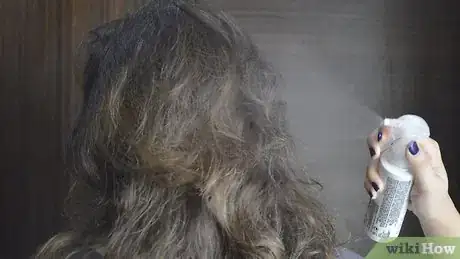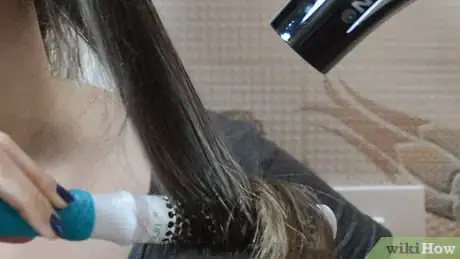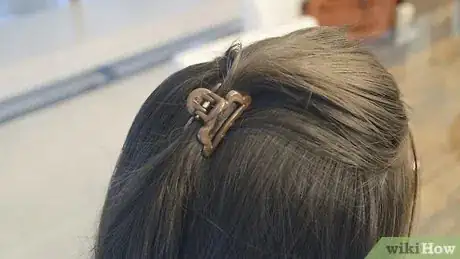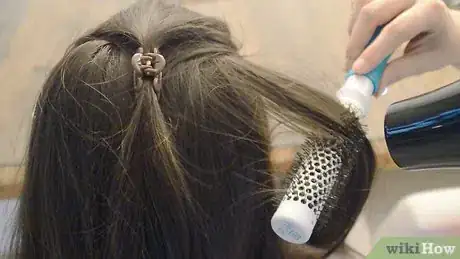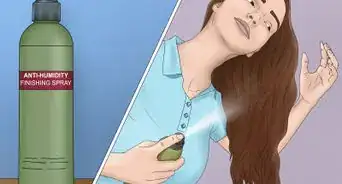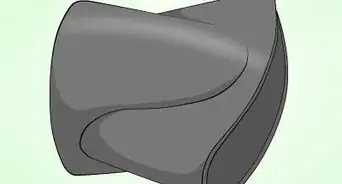This article was co-authored by Hannah Metz. Hannah Metz is a Professional Makeup & Hair Artist and the Founder and CEO of Hannah Elisabeth Beauty. With ten years of experience, she specializes in providing luxury makeup artistry and hair styling on location for others. Hannah and her team have completed beauty work for brand campaigns, celebrity red carpet events, and social media influencers.
This article has been viewed 86,283 times.
Blow drying with the wrong technique can leave your layers frizzy or flat. Either way, you're not showing off the hairstyle. For better definition and a more attractive appearance, follow these methods instead. The quick method is best for thin, straight hair, which is unlikely to frizz. The longer method is mandatory for thick or curly hair, and recommended for anyone who wants a longer-lasting style.
Steps
Quick Blow Drying
-
1Brush out your hair. Get rid of all tangles before you begin.
- Brushing wet hair can cause damage as you can break and stretch the hair when it’s in delicate condition. Start from your ends and work your way up, gently.
-
2Apply heat protectant. Blow drying always risks damaging your hair. Apply a heat protectant evenly throughout your hair. Using products such as these will help maintain the integrity of your hair when it’s exposed to heat.
- A leave-in conditioner can also work here.
Advertisement -
3Flip your hair upside down. Flip your hair forward and tilt your head toward your chest. This is good for volume and definition.
- Skip this step if you have thick, frizzy hair.
-
4Brush your hair as you go. You may hold the brush on the opposite side of your hair, moving it along to follow the blowdryer. If you'd rather not blow dry every layer separately, just blow dry without a brush, and stop every few minutes to brush your hair out.
Blow Drying Layer by Layer
-
1Start with wet hair. Layered hair usually takes a long time to blow dry. If you towel dry or allow it to air dry partially, your hair may dry before you finish heat styling. Blow drying dry hair can cause major damage.
- Brushing out tangles is recommended, unless you tend to lose hair when you brush it wet.
-
2Section your hair. Use your best judgment depending on how thick your hair is. Typically, you would divide your hair into left and right sections. Divide each of these sections further by layer, and clip most of the layers onto the top of your head. Leave the lowest layer or two hanging free.
-
3Apply heat protectant to the lowest layers. This will protect them from heat damage. Natural options such as argan oil are also available.
-
4Blow dry the lowest layers with a round brush. Place a round brush against the underside of the hair near your neck. Wrap your hair around the brush and blow dry from the other side. Move the brush and blow dryer down along your hair at the same rate, steadily drying your hair.
- The round brush helps define the ends of your hair, making your layers stand out.
- If you want to add volume, brush and blow dry backward instead. (Note that this can damage your hair.)
- Some people get better results brushing hair from the back and pulling it forward (toward the face) as it dries.
-
5Flick the brush off the hair at the end. When you reach the end of your hair, lift your brush a little and pull the brush out sideways. This little "flick" will give a natural swing to the layer, instead of having it hang straight down.
-
6Repeat with each layer. Once your hair is dry, pin it to the sides and let down the next layer. Repeat the same process for each layer until your hair is dry.
- To prevent frizz in curly hair, make sure your hair is completely dry.
- Don't forget to apply more heat protectant to each layer.
Blow Drying Short Layers
-
1If your hair is several inches above your shoulders (your shortest pieces less than an inch long), section off the hair right above your ears and clip it away.
-
2Blow dry your shortest layers (below the ears) with just the blow dryer in a downwards motion, combing through the hair with either your fingers or a brush.
-
3Proceed to dry the rest of your hair the way described previously.

